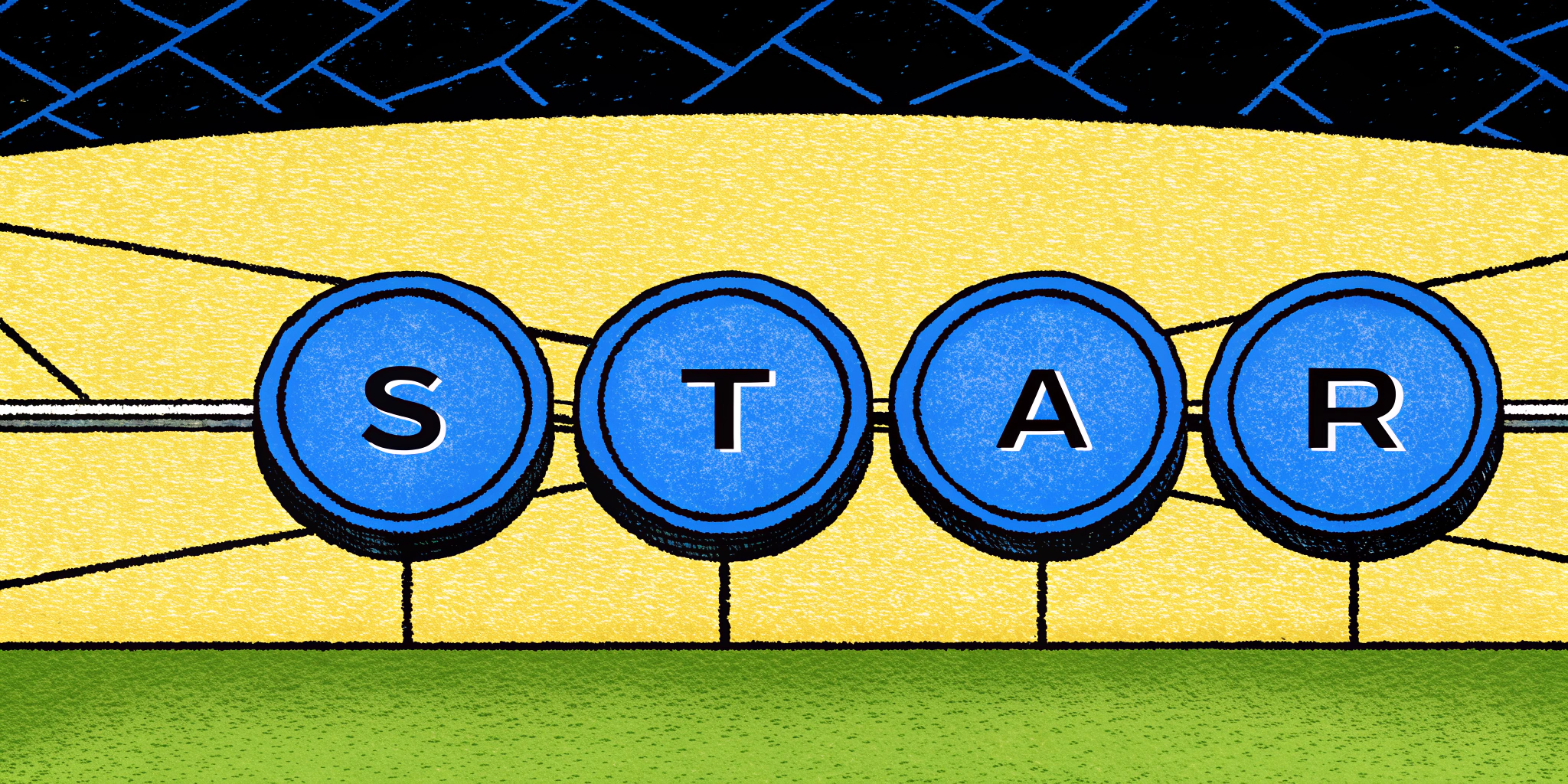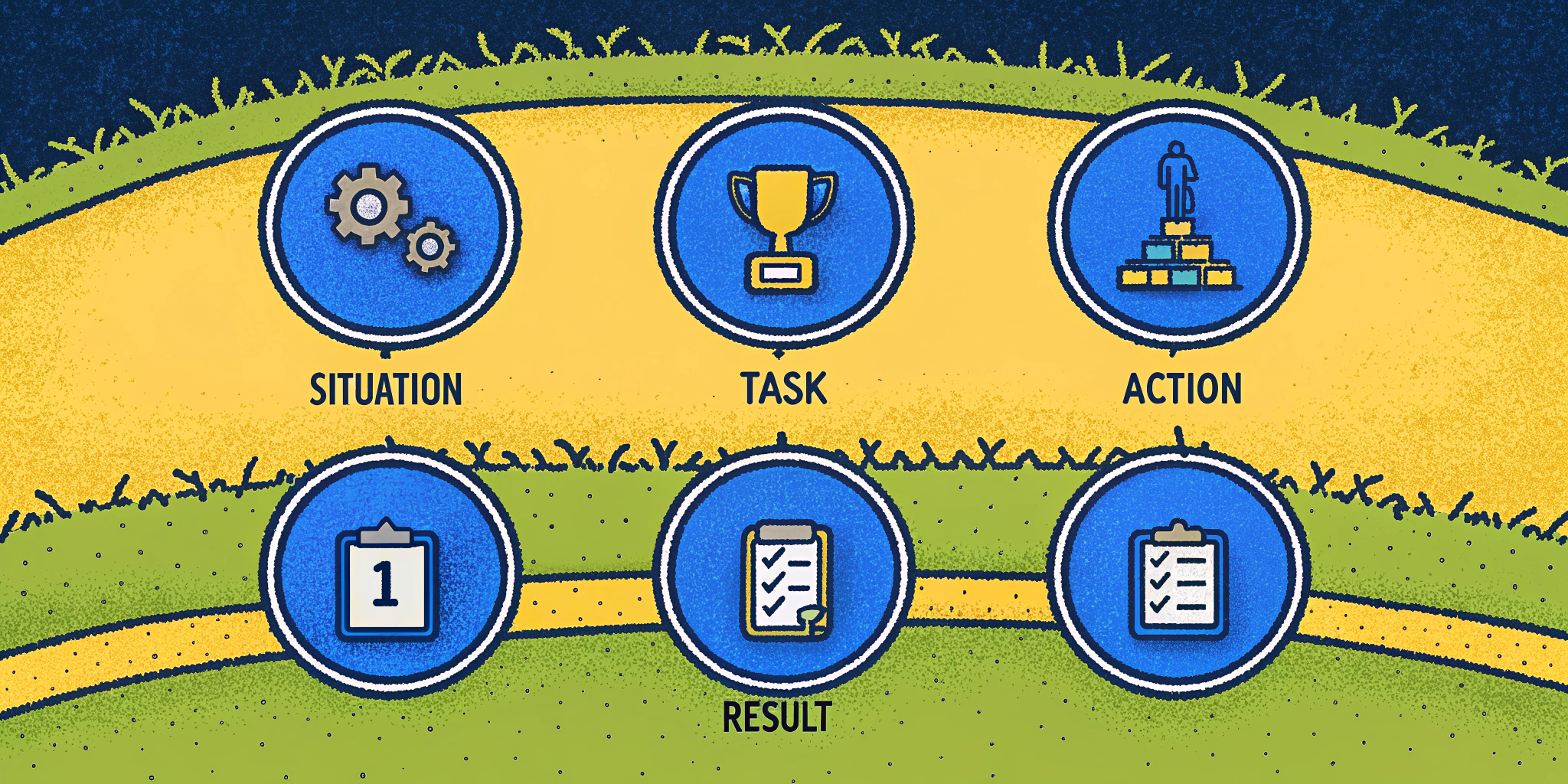As someone who has trained thousands of job seekers and worked as a career assistant, I’ve seen how the STAR technique can transform interview performance. Today, I’ll share everything you need to know about this powerful method, especially for handling situational and behavior questions.
Quick Take (Featured Snippet Target)
The STAR technique is a structured method for answering behavioral interview questions, where:
- S = Situation
- T = Task
- A = Action
- R = Result
- Perfect for both in-person and fully undetectable virtual interviews
- Ideal structure for answering interviews questions
| 📊 Key Statistics Table | Interview Element | Impact on Success |
|---|---|---|
| Behavioral Questions | 60% of interview assessment | |
| STAR Response Time | 2-3 minutes ideal length | |
| Preparation | 90% higher success rate |
Table of Contents
- What is the STAR Technique?
- Common Behavioral Interview Questions
- Real-World STAR Examples
- Tips for Implementation
- Common Mistakes to Avoid
What is the STAR Technique and Why Does It Matter?
Have you ever frozen during an interview when asked about your past experiences? You’re not alone. The STAR technique is your solution to confidently handling these challenging moments.
Whether you’re using an interview copilot or preparing independently, mastering the STAR technique is essential for modern job interviews.
Breaking Down STAR
The STAR method isn’t just another interview acronym – it’s a proven framework that helps you tell compelling workplace stories. Here’s how each component works:
- Situation: Set the scene of your story
- Keep it concise (30 seconds)
- Provide relevant context
- Set the stage for your role
- Task: Explain what was required of you
- Clearly state your responsibility
- Highlight the challenge or goal
- Make your objective clear
- Action: Detail the steps you took
- Focus on YOUR specific actions
- Use strong action verbs
- Explain your decision-making process
- Result: Share the positive outcome
- Quantify results when possible
- Link outcomes to your actions
- Include lessons learned
When facing tough behavioral questions, remember to:
- Take a brief pause to structure your thoughts
- Choose a relevant example that matches the question
- Follow the STAR sequence systematically
- Keep your total response under 3 minutes
💡 Pro Tip: When preparing your STAR responses, write down key bullet points for each component rather than memorizing full scripts. This helps keep your answers natural while ensuring you hit all important points.
Most Common Situational and Behavior Questions You Need to Prepare For
Want to know what’s coming? I’ve compiled the most frequently asked behavioral questions across different industries and job levels. Let’s break them down by categories:
1. Problem-Solving Questions
- “Tell me about a time when you had to solve a difficult problem”
- “Describe a situation where you had to think on your feet”
2. Teamwork & Conflict Resolution
- “Describe a conflict with a coworker and how you handled it”
- “Share an experience where you had to lead a team through a challenge”
3. Pressure & Time Management
- “Share an experience of working under pressure”
- “Tell me about meeting a tight deadline”
4. Customer Service & Communication
- “Explain a situation where you provided excellent customer service”
- “Share an experience of dealing with an angry customer”
5. Leadership & Initiative
- “Tell me about disagreeing with your boss”
- “Describe a time when you took initiative on a project”
6. Learning from Mistakes
- “Describe a time when you made a mistake”
- “Tell me about a failed project and what you learned”
| 📊 Question Frequency Table | Category | Likelihood in Interviews | Difficulty Level |
|---|---|---|---|
| Problem-Solving | 95% | High | |
| Teamwork | 90% | Medium | |
| Pressure Management | 85% | Medium | |
| Customer Service | 80% | Medium | |
| Leadership | 75% | High | |
| Learning from Mistakes | 70% | Very High |
Pro Tips for Preparation:
- Create a Story Bank: Prepare at least two examples for each category
- Customize Examples: Align your stories with the job requirements
- Keep it Professional: Focus on workplace scenarios, not personal life
- Numbers Matter: Include metrics and specific results where possible
- Time Management: Practice keeping responses to 2-3 minutes
- Career Assistant Tip: Align your examples with the company’s values
- Consider using an interview copilot for practice sessions
💡 Quick Tip: Record yourself answering these questions. This helps identify areas where you might ramble or need more structure in your responses.
Real-World STAR Examples That Work
Example 1: Excellence in Customer Service
Situation: “I was working with an elderly customer who struggled with online ordering.”
Task: “I needed to help her complete a purchase while maintaining our company’s service standards.”
Action:
- Asked clarifying questions to understand needs
- Explained product options and pricing
- Provided step-by-step guidance
- Extended standard call time from 2 to 7 minutes
Result: “The customer successfully completed their order and became a loyal, returning customer.”
Example 2: Handling Coworker Conflict
Situation: “I worked with a teammate whose methodical pace clashed with my faster work style.”
Task: “We needed to find a way to collaborate effectively on a shared project.”
Action:
- Initiated a one-on-one conversation
- Listened to their perspective
- Proposed a task division based on our strengths
- Created a compromise-based solution
Result: “The project was completed on time with high quality, and we developed a better working relationship.”
Tips for Implementing STAR Successfully
- Prepare Multiple Stories: Have at least 5-6 different examples ready
- Keep It Recent: Use examples from the last 2-3 years when possible
- Be Specific: Include concrete details and numbers
- Stay Relevant: Choose stories that relate to the job you’re interviewing for
| 📊 Success Factors Table | STAR Element | Key Focus | Common Pitfall |
|---|---|---|---|
| Situation | Context | Too much detail | |
| Task | Clear goal | Being vague | |
| Action | Your role | Focusing on others | |
| Result | Measurable impact | Forgetting metrics |
Common Mistakes to Avoid
- Don’t say “I’ve never made a mistake”
- Avoid hypothetical answers – use real examples
- Don’t skip the result section
- Never blame others in your stories
Conclusion: Your Path to Interview Success
The STAR technique isn’t just about memorizing a format – it’s about telling your professional story effectively. By preparing your examples using this structure, you’ll be ready to tackle any behavioral question with confidence.
Remember: Practice makes perfect. In my recent coaching sessions as a career assistant, I’ve found that using Ninjafy AI for mock interviews has been incredibly effective. Its industry-specific AI models help ensure your answers align with current industry expectations, while maintaining a fully undetectable and authentic approach to your personal experience. What I particularly value is how it helps candidates practice maintaining natural eye contact during virtual interviews – something that significantly impacts interviewer perception.
Take time to write out your STAR stories and practice them until they flow naturally. Your preparation will show in the interview, setting you apart as a confident and capable candidate.



